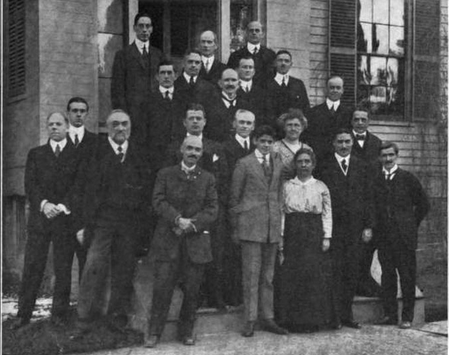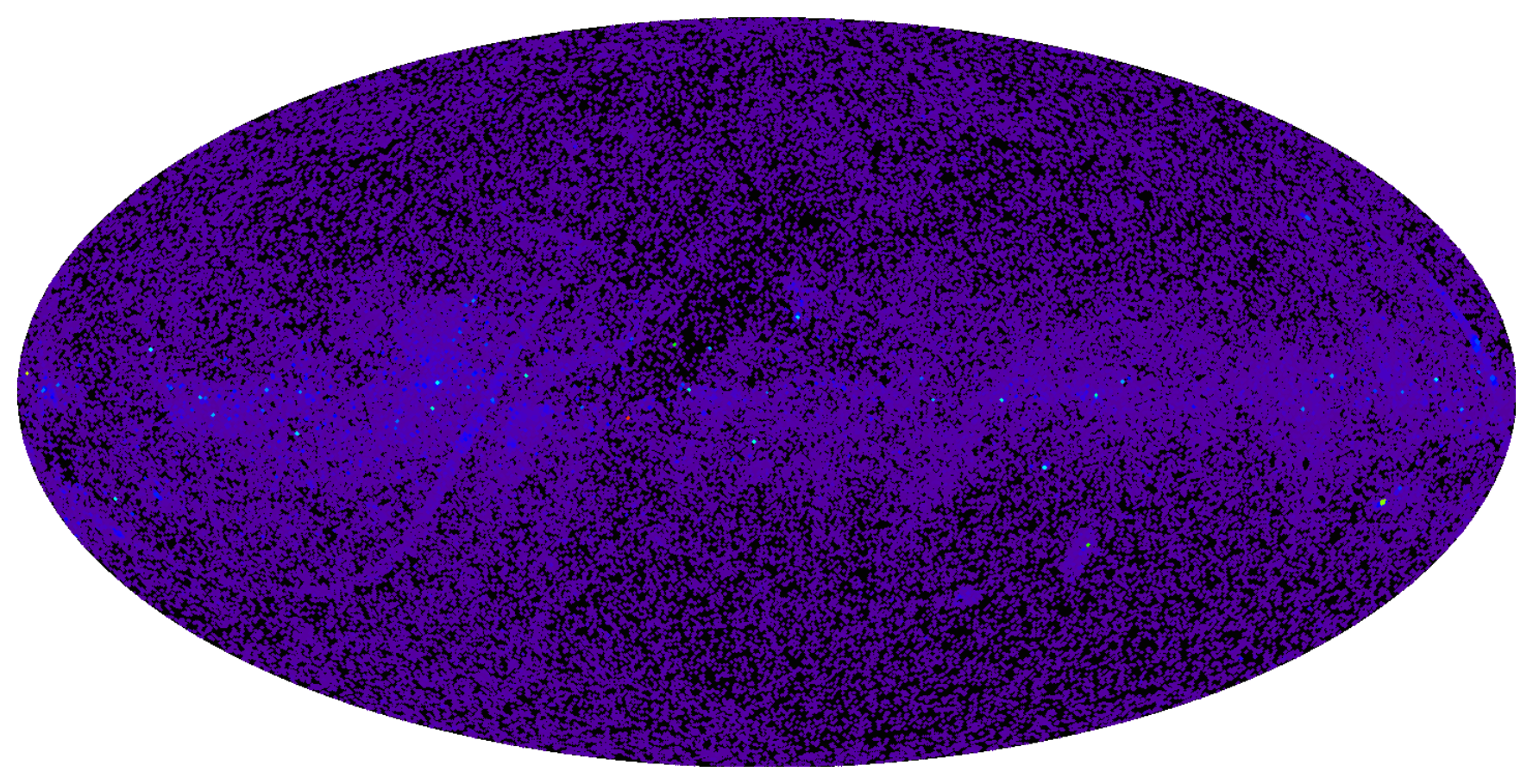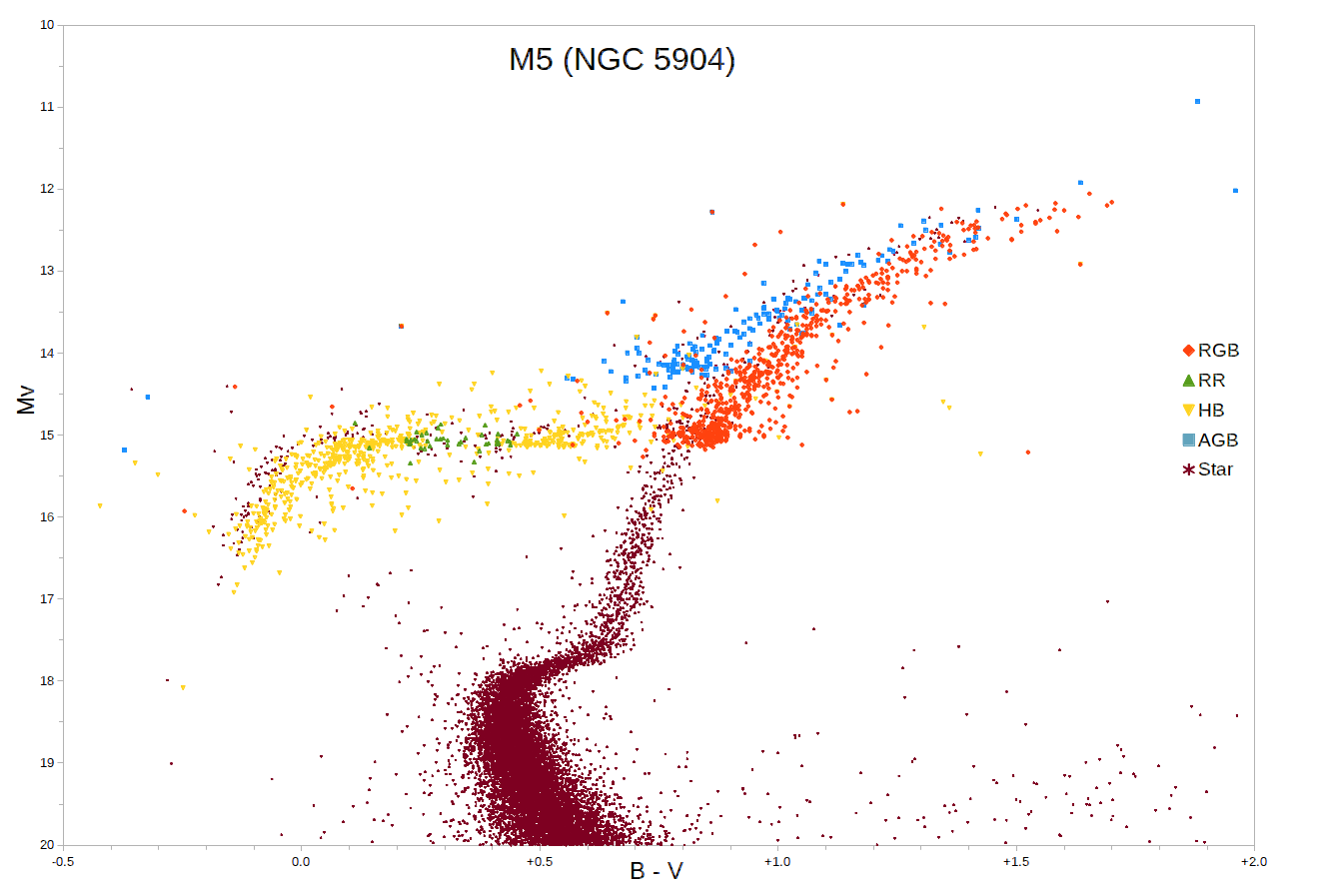|
R Cygni
R Cygni is a variable star of the Mira type in the constellation Cygnus, less than 4' from θ Cygni. This is a red giant star on the asymptotic giant branch located around 2,200 light years away. It is an S-type star ranging between spectral types S2.5,9e to S6,9e(Tc). Stars at this mass range and evolutionary stage are pulsationally unstable, displaying a variation in their light output. R Cygni has a maximum magnitude of 6.1 and a minimum magnitude of 14.4, with a period of 426.45 days. The variation of this star was discovered by English astronomer N. R. Pogson in 1852, and it has a history of recorded brightness measurements stretching back more than a century. R Cygni shows distinct period-doubling, where alternate maxima are of different brightness, hence the real period of pulsation could be considered to be twice that from one maximum to the next. The Catalog of Components of Double and Multiple Stars lists 10th magnitude BD+49 3065 as a companion to ... [...More Info...] [...Related Items...] OR: [Wikipedia] [Google] [Baidu] |
Cygnus (constellation)
Cygnus is a northern constellation on the plane of the Milky Way, deriving its name from the Latinisation of names, Latinized Greek language, Greek word for swan. Cygnus is one of the most recognizable constellations of the northern summer and autumn, and it features a prominent asterism (astronomy), asterism known as the Northern Cross (asterism), Northern Cross (in contrast to the Southern Cross). Cygnus was among the 48 constellations listed by the 2nd century astronomer Ptolemy, and it remains one of the 88 modern constellations. Cygnus contains Deneb (ذنب, translit. ''ḏanab,'' tail)one of the brightest stars in the night sky and the most distant first-magnitude staras its "tail star" and one corner of the Summer Triangle the constellation forming an east pointing Altitude (triangle), altitude of the triangle. It also has some notable X-ray sources and the giant stellar association of Cygnus OB2. One of the stars of this association, NML Cygni, is one of the List of larg ... [...More Info...] [...Related Items...] OR: [Wikipedia] [Google] [Baidu] |
Catalog Of Components Of Double And Multiple Stars
The Catalog of Components of Double and Multiple Stars, or CCDM, is an astrometry, astrometric star catalogue of double star, double and multiple star, multiple stars. It was made by Jean Dommanget and Omer Nys at the Observatoire Royal de Belgique, Royal Observatory of Belgium in order to provide an input catalogue of stars for the Hipparcos mission. The published first edition of the catalog, released in 1994, has entries for 74,861 components of 34,031 double and multiple stars; the second edition, in 2002, has been expanded to provide entries for 105,838 components of 49,325 double and multiple stars. The catalog lists positions, apparent magnitude, magnitudes, spectral types, and proper motions for each component. References * * Further reading * * * * External linksThe CCDM, second edition, at VizieR Astronomical catalogues of stars Double stars, * Multiple stars, * {{astronomical-catalogue-stub ... [...More Info...] [...Related Items...] OR: [Wikipedia] [Google] [Baidu] |
Hipparcos Objects
''Hipparcos'' was a scientific satellite of the European Space Agency (ESA), launched in 1989 and operated until 1993. It was the first space experiment devoted to precision astrometry, the accurate measurement of the positions and distances of celestial objects on the sky. This permitted the first high-precision measurements of the luminosity, intrinsic brightnesses, proper motions, and parallaxes of stars, enabling better calculations of their distance and tangential velocity. When combined with radial velocity measurements from spectroscopy, astrophysicists were able to finally measure all six quantities needed to determine the motion of stars. The resulting ''Hipparcos Catalogue'', a high-precision catalogue of more than 118,200 stars, was published in 1997. The lower-precision ''Tycho Catalogue'' of more than a million stars was published at the same time, while the enhanced Tycho-2 Catalogue of 2.5 million stars was published in 2000. ''Hipparcos'' follow-up mission, ''Gaia ... [...More Info...] [...Related Items...] OR: [Wikipedia] [Google] [Baidu] |
Henry Draper Catalogue Objects
Henry may refer to: People and fictional characters * Henry (given name), including lists of people and fictional characters * Henry (surname) * Henry, a stage name of François-Louis Henry (1786–1855), French baritone Arts and entertainment * Henry (2011 film), ''Henry'' (2011 film), a Canadian short film * Henry (2015 film), ''Henry'' (2015 film), a virtual reality film * ''Henry: Portrait of a Serial Killer'', a 1986 American crime film * Henry (comics), ''Henry'' (comics), an American comic strip created in 1932 by Carl Anderson * "Henry", a song by New Riders of the Purple Sage Places Antarctica * Henry Bay, Wilkes Land Australia *Henry River (New South Wales) *Henry River (Western Australia) Canada * Henry Lake (Vancouver Island), British Columbia * Henry Lake (Halifax County), Nova Scotia * Henry Lake (District of Chester), Nova Scotia New Zealand * Lake Henry (New Zealand) * Henry River (New Zealand) United States * Henry, Illinois * Henry, Indiana * Henry, Nebras ... [...More Info...] [...Related Items...] OR: [Wikipedia] [Google] [Baidu] |
Durchmusterung Objects
In astronomy, Durchmusterung or Bonner Durchmusterung (BD) is an astrometric star catalogue of the whole sky, published by the Bonn Observatory in Germany from 1859 to 1863, with an extension published in Bonn in 1886. The name comes from ('run-through examination'), a German word used for a systematic survey of objects or data. The term has sometimes been used for other astronomical surveys, including not only stars, but also the search for other celestial objects. Special tasks include celestial scanning in electromagnetic spectrum, electromagnetic wavelengths shorter or longer than visible light waves. Original catalog The Bonner Durchmusterung (abbreviated BD), was initiated by Friedrich Wilhelm Argelander, Friedrich Argelander and using observations largely carried out by his assistants, which resulted in a catalogue of the positions and apparent magnitudes of 342,198 stars down to approximate apparent magnitude 9.5 and covering the sky from 90°N to 2°S declination. The cat ... [...More Info...] [...Related Items...] OR: [Wikipedia] [Google] [Baidu] |
Mira Variables
Mira variables (named for the prototype star Mira) are a class of pulsating stars characterized by very red colours, pulsation periods longer than 100 days, and amplitudes greater than one Apparent magnitude, magnitude in infrared and 2.5 magnitude at visual wavelengths. They are red giants in the very late stages of stellar evolution, on the asymptotic giant branch (AGB), that will expel their outer envelopes as planetary nebulae and become white dwarfs within a few million years. Mira variables are stars massive enough that they have undergone Triple-alpha process, helium fusion in their cores but are less than two solar masses, stars that have already lost about half their initial mass. However, they can be thousands of times more luminosity, luminous than the Sun due to their very large distended envelopes. They are pulsating due to the entire star expanding and contracting. This produces a change in temperature along with radius, both of which factors cause the variation i ... [...More Info...] [...Related Items...] OR: [Wikipedia] [Google] [Baidu] |
S-type Stars
S-Type may refer to: * S-Type (music producer), a Scottish producer and DJ * S-type asteroid, asteroids with siliceous mineralogical composition * S type fuse, electrical fuses with an Edison base * S-type granite, a category of granite * S-type star, a cool giant with equal carbon and oxygen in its atmosphere * Binary star#Planet, S-type orbit, type of planetary orbit in a binary system * Bedford S type, a truck 1950–1959 * Jaguar S-Type (other), two makes of car * Jensen S-type, a car * Renault S-Type engine, or Sofim 8140, a car engine * Soviet S-class submarine, during World War 2 * New South Wales S type carriage stock, an Australian railway carriage * Victorian Railways S type carriage, an Australian railway carriage See also * * Class S (other) * Type S (other) * S class (other) {{disambiguation ... [...More Info...] [...Related Items...] OR: [Wikipedia] [Google] [Baidu] |
American Association Of Variable Star Observers
The American Association of Variable Star Observers (AAVSO) is an international nonprofit organization. Founded in 1911, the organization focuses on coordinating, analyzing, publishing, and archiving variable star observations made largely by amateur astronomers. The AAVSO creates records that establish light curves depicting the variation in brightness of a star over time. The AAVSO makes these records available to professional astronomers, researchers, and educators. Professional astronomers do not have the resources to monitor every variable star. Hence, astronomy is one of the few sciences where amateurs can make significant contributions to research. In 2011, the 100th year of the AAVSO's existence, the twenty-millionth variable star observation was received into their database. The AAVSO International Database (AID) has stored over thirty-five million observations as of 2019. The organization receives nearly 1,000,000 observations annually from an estimated amount of 2,00 ... [...More Info...] [...Related Items...] OR: [Wikipedia] [Google] [Baidu] |
List Of Largest Known Stars
A list is a set of discrete items of information collected and set forth in some format for utility, entertainment, or other purposes. A list may be memorialized in any number of ways, including existing only in the mind of the list-maker, but lists are frequently written down on paper, or maintained electronically. Lists are "most frequently a tool", and "one does not ''read'' but only ''uses'' a list: one looks up the relevant information in it, but usually does not need to deal with it as a whole".Lucie Doležalová,The Potential and Limitations of Studying Lists, in Lucie Doležalová, ed., ''The Charm of a List: From the Sumerians to Computerised Data Processing'' (2009). Purpose It has been observed that, with a few exceptions, "the scholarship on lists remains fragmented". David Wallechinsky, a co-author of '' The Book of Lists'', described the attraction of lists as being "because we live in an era of overstimulation, especially in terms of information, and lists help us ... [...More Info...] [...Related Items...] OR: [Wikipedia] [Google] [Baidu] |
Washington Double Star Catalog
The Washington Double Star Catalog, or WDS, is a catalog of double stars, maintained at the United States Naval Observatory. The catalog contains positions, magnitudes, proper motions and spectral types and has entries for (as of January 2024) 157,012 pairs of double stars. The catalog also includes multiple stars. In general, a multiple star with ''n'' components will be represented by entries in the catalog for ''n''−1 pairs of stars. History The database used to construct the WDS originated at Lick Observatory, where it was used to construct the Index Catalog of Visual Double Stars, published in 1963. In 1965, under the initiative of Charles Worley, it was transferred to the Naval Observatory. The catalog has since been augmented by many measurements, mainly from the Hipparcos and Tycho catalogues and results from speckle interferometry, as well as other sources. A unique 1–3 letter discovery code is used to identify the observer who reported the information. For example ... [...More Info...] [...Related Items...] OR: [Wikipedia] [Google] [Baidu] |
Apparent Magnitude
Apparent magnitude () is a measure of the Irradiance, brightness of a star, astronomical object or other celestial objects like artificial satellites. Its value depends on its intrinsic luminosity, its distance, and any extinction (astronomy), extinction of the object's light caused by interstellar dust along the sightline, line of sight to the observer. Unless stated otherwise, the word ''magnitude'' in astronomy usually refers to a celestial object's apparent magnitude. The magnitude scale likely dates to before the ancient Ancient Greek astronomy#Astronomy in the Greco-Roman and Late Antique eras, Roman astronomer Ptolemy, Claudius Ptolemy, whose Star catalogue, star catalog popularized the system by listing stars from First-magnitude star, 1st magnitude (brightest) to 6th magnitude (dimmest). The modern scale was mathematically defined to closely match this historical system by Norman Robert Pogson, Norman Pogson in 1856. The scale is reverse logarithmic scale, logarithmic: ... [...More Info...] [...Related Items...] OR: [Wikipedia] [Google] [Baidu] |
Asymptotic Giant Branch
The asymptotic giant branch (AGB) is a region of the Hertzsprung–Russell diagram populated by evolved cool luminous stars. This is a period of stellar evolution undertaken by all low- to intermediate-mass stars (about 0.5 to 8 solar masses) late in their lives. Observationally, an asymptotic-giant-branch star will appear as a bright red giant with a luminosity ranging up to thousands of times greater than the Sun. Its interior structure is characterized by a central and largely inert core of carbon and oxygen, a shell where helium is undergoing fusion to form carbon (known as helium burning), another shell where hydrogen is undergoing fusion forming helium (known as hydrogen burning), and a very large envelope of material of composition similar to main-sequence stars (except in the case of carbon stars). Stellar evolution When a star exhausts the supply of hydrogen by nuclear fusion processes in its core, the core contracts and its temperature increases, causing the oute ... [...More Info...] [...Related Items...] OR: [Wikipedia] [Google] [Baidu] |








